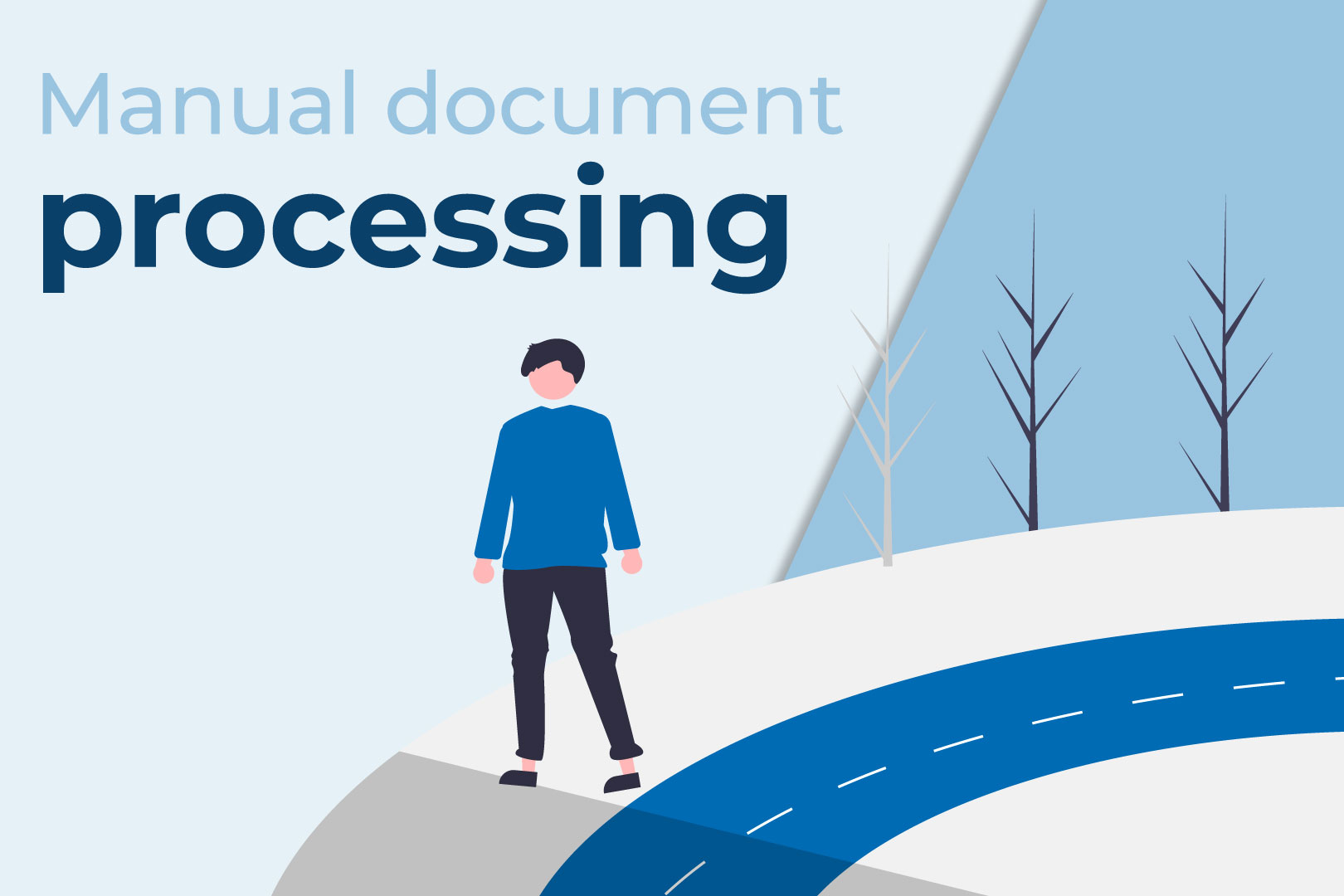
These are conversations often seen in organizations that process documents manually.
Organizations manually processing documents invest significant time, effort and cost in handling paperwork. With stricter compliance and a process-centric approach to the business world, documents are generated at every step of the process. Imagine multiple documents, multiple formats, and multiple layouts of documents, the thought itself is so cluttered and complicated. But this is the plight of multiple organizations processing inbound documents manually.
While the conventional method of managing documents has been in use for many years, it is evident that reliance on manual techniques can impede progress, efficiency, and overall achievement. Here are some prevalent hurdles and challenges of manual document processing:
TIME-CONSUMING
Manually processing inbound documents can be exceedingly time-consuming due to the multitude of tasks involved. The need to physically handle each document, from sorting and filing to data entry and verification is tiresome. A recent article mentions that 66% of businesses say processing invoices takes up more than five days per month. These steps demand a significant amount of human effort and hence the processing speed fails to be consistent. Every delay in processing leads to a delay in the overall progress throughout the processes.
DATA ERRORS
Manually processing documents is inherently prone to errors due to its reliance on human dependence. Even the most diligent employees can make mistakes when handling large volumes of paperwork under the pressure of finishing the tasks in the stipulated timeframe. These errors can range from data entry typos to inappropriate or incomplete processing of data.
A published paper also indicates that manual data entry into spreadsheets and documents can result in human errors ranging from 18% to 40%.
The critical task of performing conditional checks for credit allotment, integration with the ERP, and other minute checks (amount as agreed, terms and conditions according to the agreement, delivery date, amount, and more…) in unstructured documents plays an important role during the data entry stage and causes maximum probability of entering inappropriate details
These inaccuracies, encompassing erroneous data input such as incorrect costs, payment delays, duplication of payments straining financial resources, and the erosion of confidence and motivation, underline the need for a meticulous and error-free data processing.
FORMAT ISSUES
The organizations receive inbound documents in multiple formats from their business partners (vendors, clients, consultants, etc.) as per the internal system of these organizations. Manually processing documents can be an intricate and time-consuming process as it involves processing a diverse range of documents such as physical paper/ hardcopy, digital PDF scanned images, and more.
Misinterpretation of data from unstructured documents is also an important issue in the manual process as every document received is not in the utmost understandable form. This not only hampers efficiency but also starts a trail of correspondence and email exchange for clarifications and corrections increasing the likelihood of errors during data entry and transfer. Furthermore, the staff spends excessive time converting, organizing, and verifying documents, discussing back and forth about the errors and their correction processes, delaying the overall process.
OTHER ISSUES
Apart from the above-mentioned issues, here are more challenges of document processing relevant to most of the organizations:
- Misplaced documents
- Lack of transparency and duplicity due to silo working.
- Need for multiple follow-ups, co-ordination, and reminders for getting approvals on the document leading to waste of valuable time of resources.
- Recognizing details written on handwritten and unstructured documents or photocopied documents leads to errors in data entry.
- Apple-to-apple comparison of documents like quotations and the cross-checking between correlated documents like invoices, Purchase orders, and GRN before approving invoices and many more such details.
- Too many checks and business rules to adhere to that can result in stress built-up and resulting in catastrophic errors.
The limitations and challenges associated with manual methods of processing documents have been longstanding obstacles in effectively dealing with documents in an efficient and speedy manner for many organizations ultimately hindering productivity. The clear path forward is adopting automation. By embracing automated incoming document processing solutions, businesses can break free from the shackles of inefficiency and inaccuracy. Organizations need to learn the importance of automating incoming document management and the benefits of adopting it as today’s fast-paced and data-driven world relies on data and focuses on accuracy while optimizing the use of all the resources.


